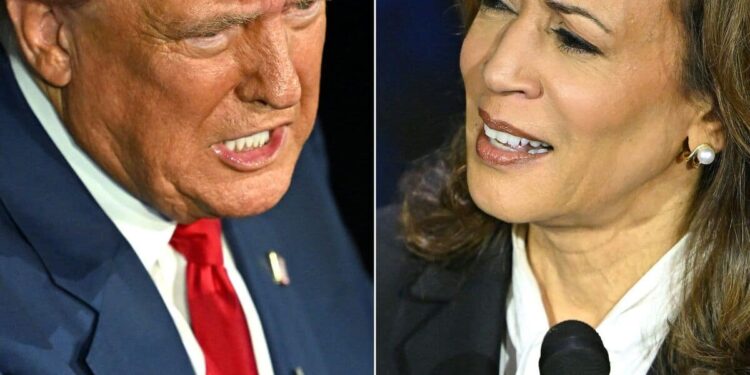For political analysts and commentators, polls are among the tools we have at our disposal to assess candidates’ chances of success.
We sometimes confuse their primary role, that of showing us a screenshot of a moment in the campaign or to identify a trend, to transform them into a prediction tool. The Harris and Trump teams are telling us to beware.
After the failures of 2016 and 2020, do the polls this time offer a more realistic overall portrait?
We learn from our mistakes
At the end of August, the Pew Research Center, an independent research center, published an analysis of the evolution of the work of pollsters.
First observation noted; the number of pollsters exploded between 2000 and 2022. Not only are there more polls, but we are increasing the methods used. In the table below, the different colors indicate the number of different methods used to reach voters.
Second observation; pollsters now consider more variables when surveying voters.
About ten years ago, we were content to validate three or four variables (the sex or age of the respondents for example) whereas recently we have pushed up to 8 or 12 variables, which makes it possible to better identify this which influences the voter.
Do these changes to practices allow pollsters to be more precise? If the objective is to ensure that the polls correspond to the results on election night, the exercise was not conclusive in 2016 and 2020.
If what we first and foremost wanted to achieve was a trend, the evaluation becomes more positive. Notably, pollsters were particularly good in the 2022 midterm elections.
Even if pollsters go beyond the raw numbers and add their analysis, it remains terribly difficult to predict the outcome of an election.
Certain factors such as the enthusiasm of voters, or their real motivation to travel to register their vote, remain complex to measure.
The bounty at the ballot box
Overall, the quality of the polls has improved significantly over time, but, as this table indicates, they overestimated the vote for Democratic candidates in 2016 and 2020.
Since then, it has been regularly said that Donald Trump would enjoy a “bonus at the ballot box”, that his supporters would be embarrassed to reveal their intentions to pollsters. However, if they escape the pollsters, it is not out of embarrassment, but rather because they are fleeing them.
These days, current polls indicate that Kamala Harris is slightly ahead. Should we consider it more of a tie because of this supposed bonus at the ballot box?
Pollsters questioned on this subject respond that it is far from certain. This time, it could even be Kamala Harris whose support we underestimate.
It is difficult to measure the influence of all these new young voters, more specifically young women, on the outcome of the vote.



